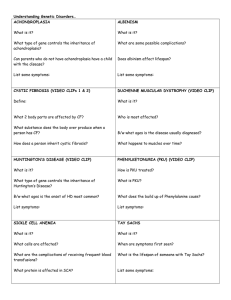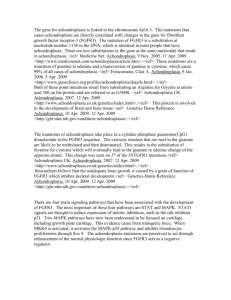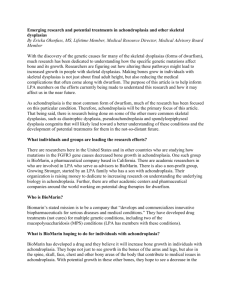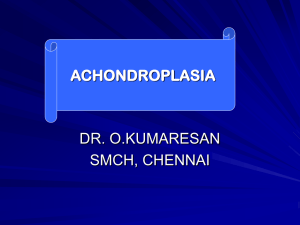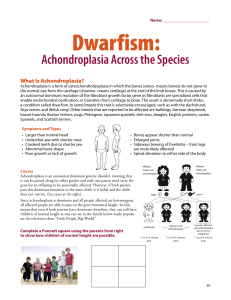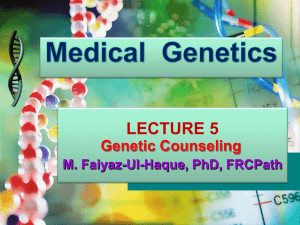Special Considerations for Children with Achondroplasia in an
advertisement
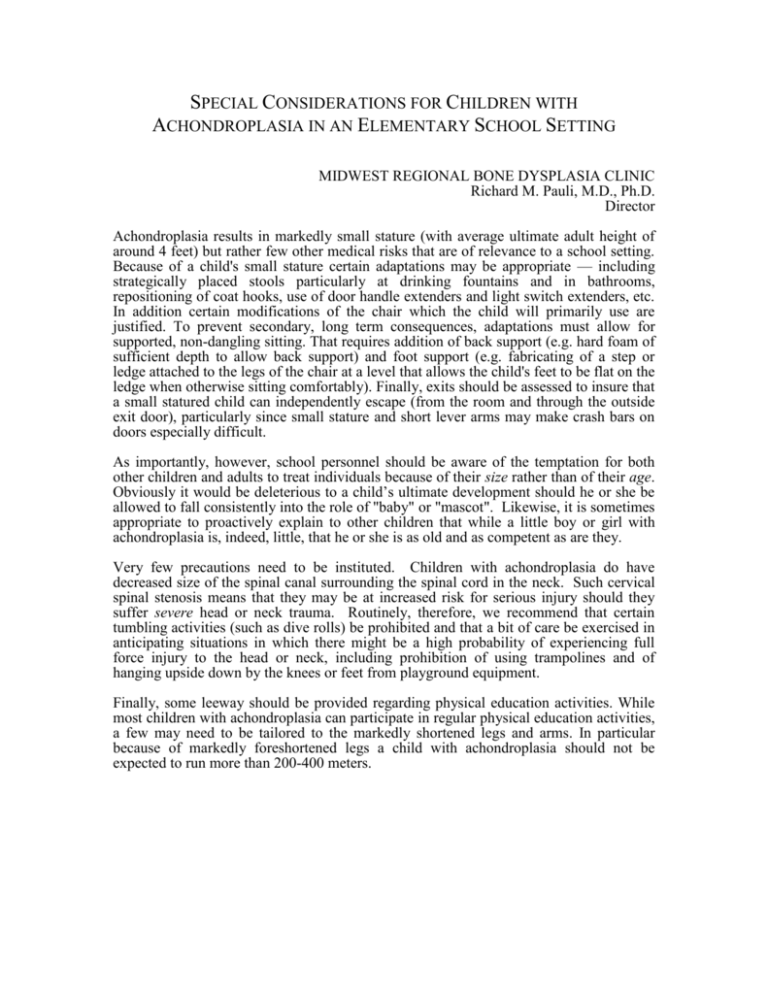
SPECIAL CONSIDERATIONS FOR CHILDREN WITH ACHONDROPLASIA IN AN ELEMENTARY SCHOOL SETTING MIDWEST REGIONAL BONE DYSPLASIA CLINIC Richard M. Pauli, M.D., Ph.D. Director Achondroplasia results in markedly small stature (with average ultimate adult height of around 4 feet) but rather few other medical risks that are of relevance to a school setting. Because of a child's small stature certain adaptations may be appropriate — including strategically placed stools particularly at drinking fountains and in bathrooms, repositioning of coat hooks, use of door handle extenders and light switch extenders, etc. In addition certain modifications of the chair which the child will primarily use are justified. To prevent secondary, long term consequences, adaptations must allow for supported, non-dangling sitting. That requires addition of back support (e.g. hard foam of sufficient depth to allow back support) and foot support (e.g. fabricating of a step or ledge attached to the legs of the chair at a level that allows the child's feet to be flat on the ledge when otherwise sitting comfortably). Finally, exits should be assessed to insure that a small statured child can independently escape (from the room and through the outside exit door), particularly since small stature and short lever arms may make crash bars on doors especially difficult. As importantly, however, school personnel should be aware of the temptation for both other children and adults to treat individuals because of their size rather than of their age. Obviously it would be deleterious to a child’s ultimate development should he or she be allowed to fall consistently into the role of "baby" or "mascot". Likewise, it is sometimes appropriate to proactively explain to other children that while a little boy or girl with achondroplasia is, indeed, little, that he or she is as old and as competent as are they. Very few precautions need to be instituted. Children with achondroplasia do have decreased size of the spinal canal surrounding the spinal cord in the neck. Such cervical spinal stenosis means that they may be at increased risk for serious injury should they suffer severe head or neck trauma. Routinely, therefore, we recommend that certain tumbling activities (such as dive rolls) be prohibited and that a bit of care be exercised in anticipating situations in which there might be a high probability of experiencing full force injury to the head or neck, including prohibition of using trampolines and of hanging upside down by the knees or feet from playground equipment. Finally, some leeway should be provided regarding physical education activities. While most children with achondroplasia can participate in regular physical education activities, a few may need to be tailored to the markedly shortened legs and arms. In particular because of markedly foreshortened legs a child with achondroplasia should not be expected to run more than 200-400 meters.

